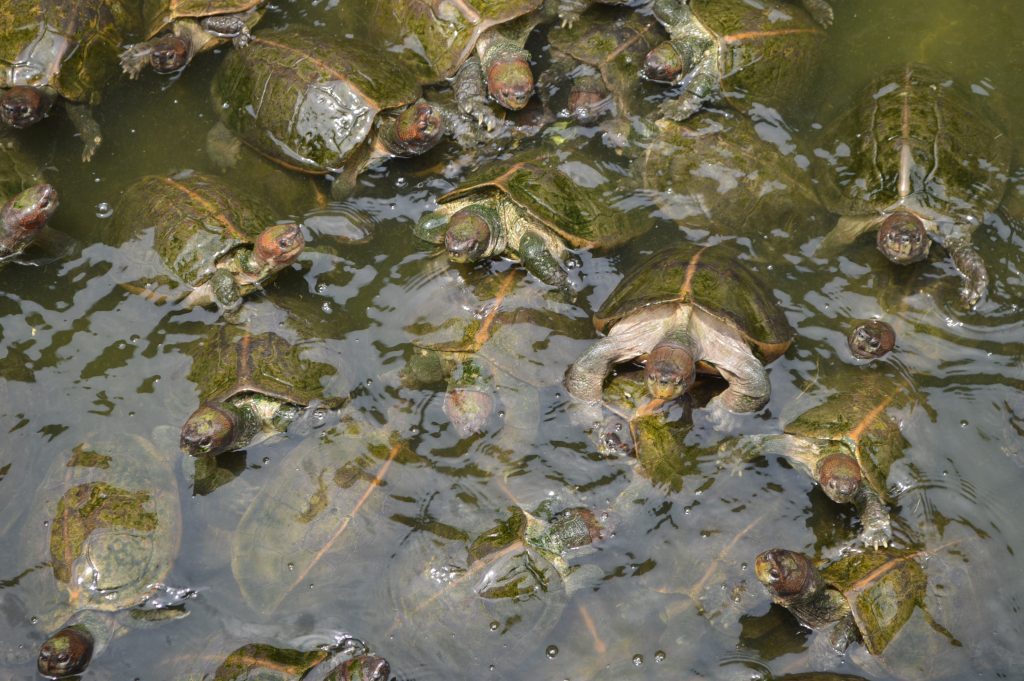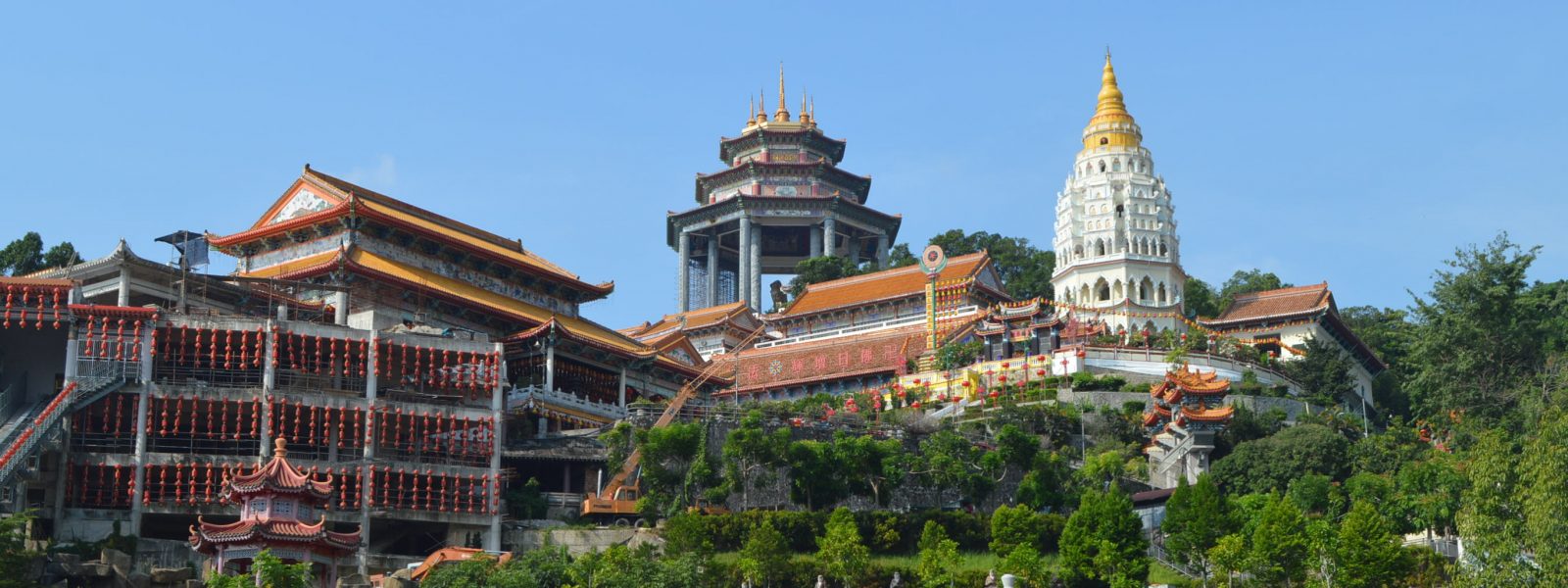The location of Kek Lok Si Temple complex is on the Island of Penang in the suburb of Air Itam. Additionally, Kek Lok Si is conveniently located about 8km from Komtar in the George Town city center. Therefore, the temple location is easy to access by bus, taxi or motorbike.
In Penang, the most common dialect spoken by Chinese residents is “Hokkien”. In Hokkien, Kek Lok Si translates as “Temple of Supreme Bliss”. Indeed, a large segment of the population in Malaysia is of Chinese origin, especially in the state of Pulau Pinang.
The Chinese population has become well established in Penang and the Kek Lok Si Temple is a symbol of their success. As a result, the temple grounds include hundreds of statues, several temples and a special pagoda dedicated to cultural diversity.
Kek Lok Si Temple Points of Interest
In Air Itam, Kek Lok Si sits on a hill the temple’s founding monk called “Crane Mountain”. The large temple complex covers 12 hectares spread over the hillside. As a result, the spacious temple grounds include several prominent sites of interest.
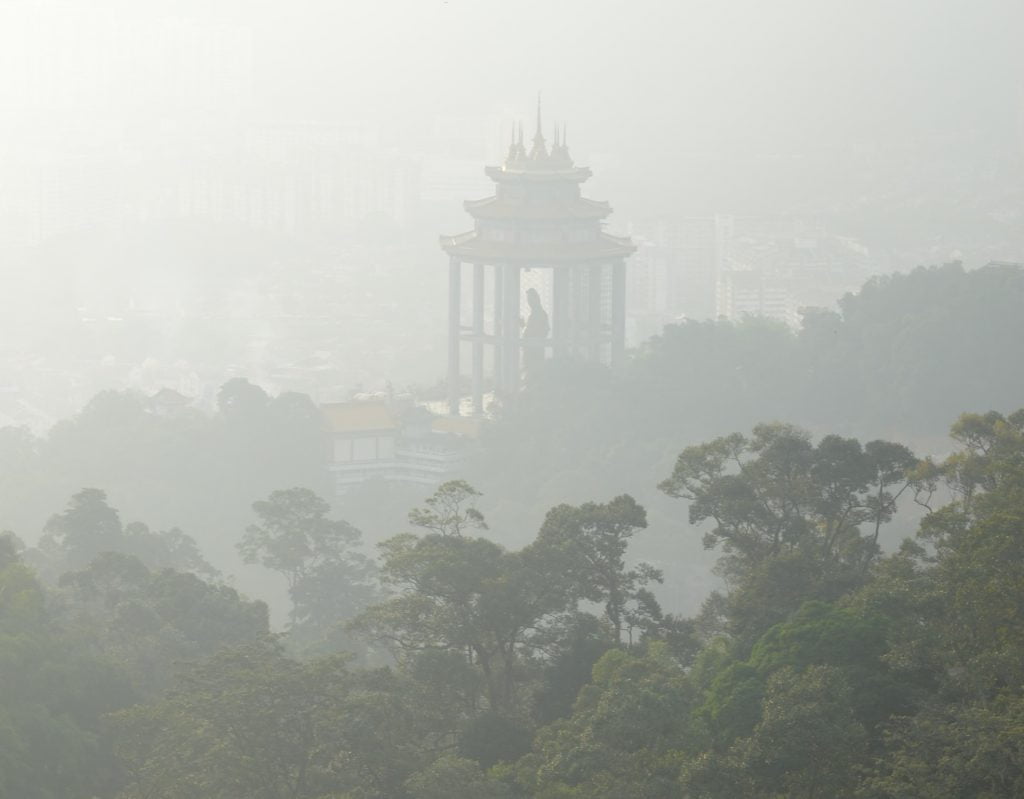
The main attractions at Kek Lok Si Temple are the beautiful statue of the Guanyin Bodhisattva and also the Pagoda of the 10,000 Buddhas. Additionally, there is the Turtle Liberation Pond, a vegetarian restaurant and much more.
Historical Significance of Kek Lek Si
A Chinese monk named Beow Lean was the mastermind behind the development of Kek Lok Si Temple. Furthermore, a majority of the funds for the temple construction was provided by prominent members of the local Hakka clan who had originally immigrated from China. As a result, Beow Lean was able to begin construction in 1890. The temple construction was completed in 1905, after only 15 years. Indeed, Kek Lok Si has become the largest Buddhist temple complex in all of Malaysia.
The beautiful Buddhist temple quickly became famous throughout East Asia. As a result, the Qing Emperor, Guangxu, summoned Beow Lean to Beijing. After his arrival in the Forbidden City, the emperor bestowed 70,000 of the “Psalms of the ancient works of Buddhism” to Beow Lean to bring back and store at the Kek Lok Si Temple complex.
This was prudent thinking by the Qing emperor because the end of the dynastic period in China was imminent. Indeed, political upheaval would soon cause the collapse of the Qing Dynasty in 1912. However, the sacred texts were preserved at Kek Lok Si Temple during the nationalist revolution, civil war and rise of communism that followed.
Guanyin Statue at Kek Lok Si Temple
Kek Lok Si Temple’s most commanding feature is the 30.2 meter tall bronze statue of the Guanyin Bodhisattva. Additionally, the monument features a 60 meter high rooftop pavilion. The Guanyin statue was completed in 2002, the pavilion followed soon afterwards in 2009. Indeed, this is the largest statue of Guanyin in SE Asia and the most recent addition to Kek Lok Si Temple.
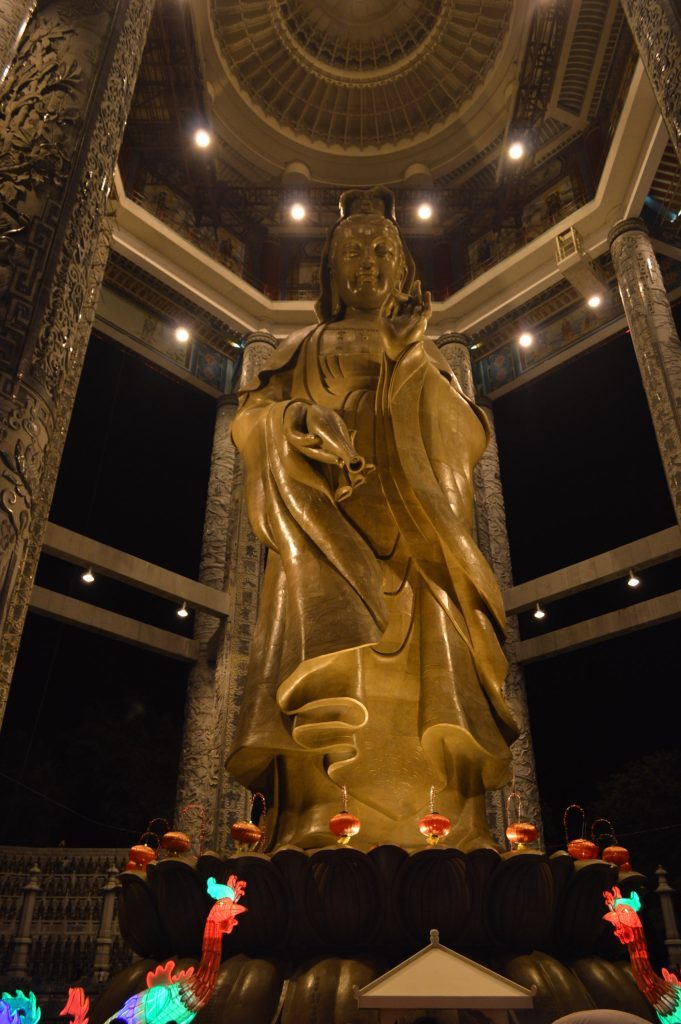
Guanyin is the Chinese incarnation of Avalokiteshvara, a central figure in Mahayana Buddhist beliefs. The goddess has many phonetic spelling variations such as Kwan Yin, Kuan Yin, Quan Yin and Guanyin, plus many more. However, they all mean the same thing which is “regarder of sounds”.
Indeed, Chinese Buddhists believe that Guanyin hears the cries and prayers of the world, just like Avalokiteshvara. Guanyin is a very popular Buddhist symbol in China and also other regions that have a large Chinese population, such as Penang.
Symbolically, Guanyin is holding a vase filled with healing water which has special powers. Additionally, the vase is tipping over, as a result, she is liberally dispensing the “Dew of Compassion” which Chinese Buddhists believe is the water of creation. Additionally, Guanyin devotees believe that she is the goddess of fertility and she grants it to all who ask.
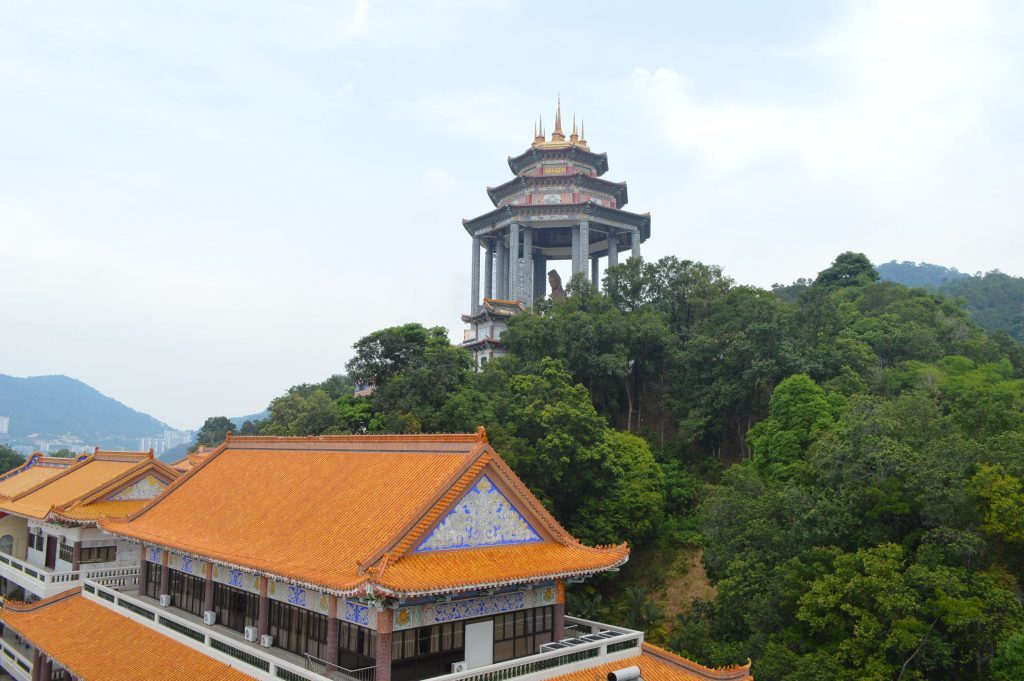
Chinese New Year at Kek Lok Si Temple
Annually, during Chinese New Year, visitor hours are extended and the temple grounds are decorated with 10,000 lights. The light decorations and extended hours last for 30 days starting the first day of Chinese New Year. Additionally, fireworks are a big part of the annual celebrations at the temple. Indeed, the fireworks display on the eve of CNY is a must see event for visitors.


The Pagoda of “Ten Thousand Buddhas”
The name of the prominent pagoda at Kek Lok Si is – “Ban Po Thar” which means “Ten Thousand Buddhas”. Additionally, the pagoda was constructed in 1930 with an interesting multicultural diplomatic theme.
To pay tribute to cultural harmony, the pagoda has been split into three tiers. As a result, the octagonal base is Chinese, the middle portion is Thai and the spiral top is Burmese. The alternate name of the pagoda is “Rama Pagoda” after King Rama the VI of Thailand.
Furthermore, the three tiers also symbolize the divide between Mahayana and Theravada Buddhism. In Myanmar and Thailand, they practice the more conservative Theravada Buddhism. However, the Chinese adhere to their version of Mahayana Buddhism. Indeed, due considerations were made during construction to facilitate the different schools.
The Pagoda of 10,000 Buddhas
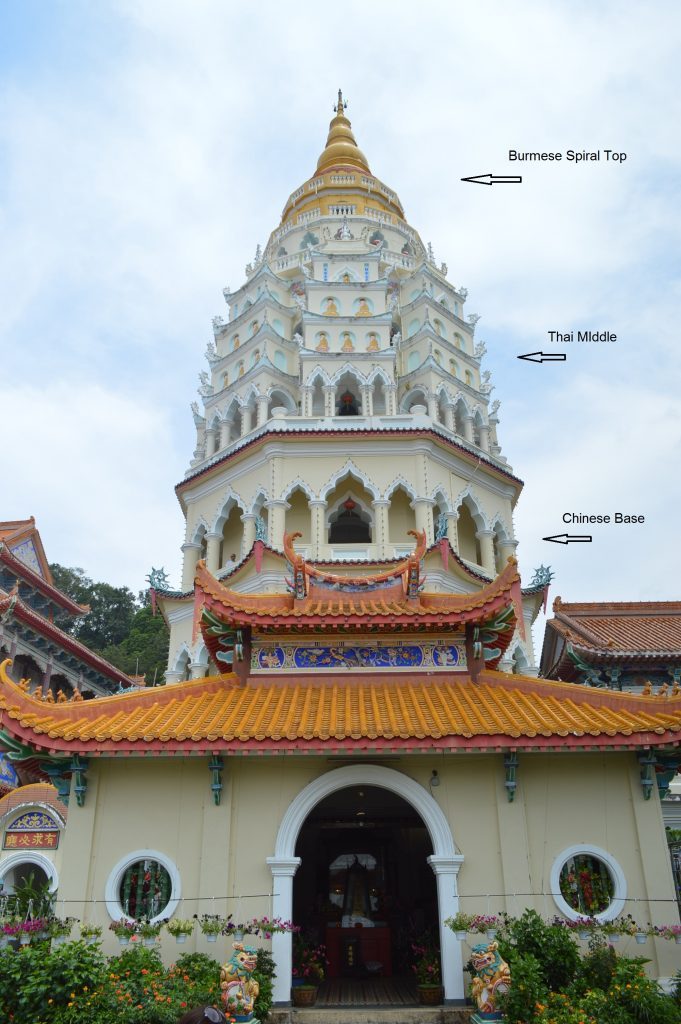
The Ban Po Thar Pagoda Buddhas
The Pagoda of Ten Thousand Buddhas does indeed have at least this many Buddhas featured inside and outside of the pagoda. The interior of the pagoda features most of the Buddhas in the form of alabaster tiles. However, the exterior also features additional Buddhas. Additionally, the three different levels of the pagoda feature Buddha statues which display the designated cultural characteristics of that tier.
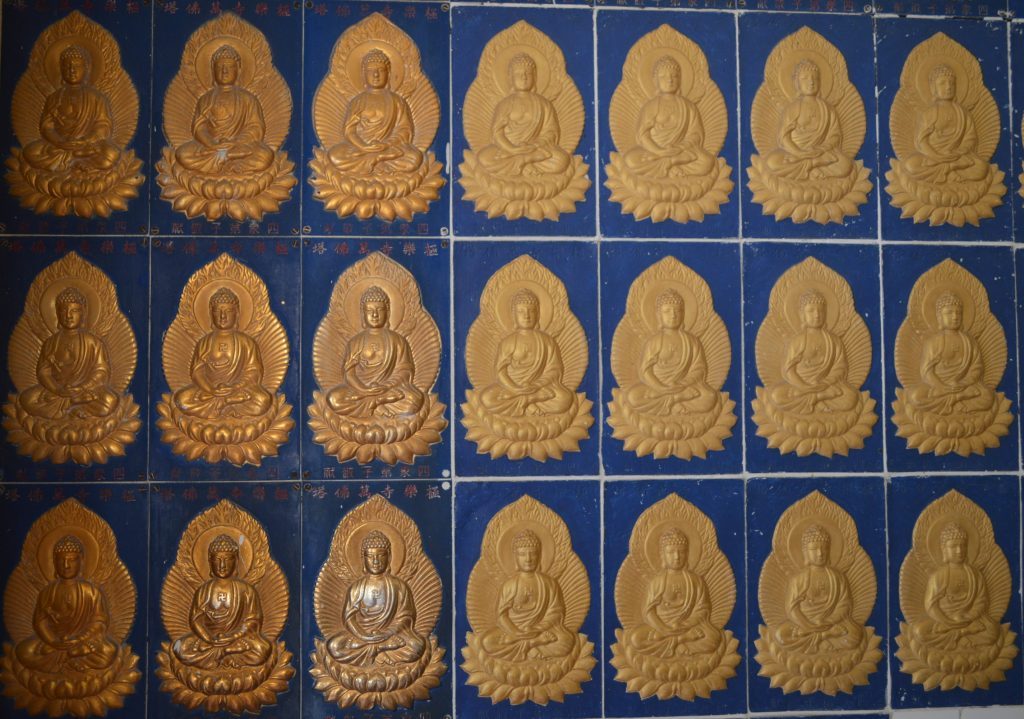
Inside the pagoda, the Buddha statues display different themes according to the different sculptural styles found in China, Thailand and Burma. Additionally, they are situated inside the pagoda according to their ethnic origins.
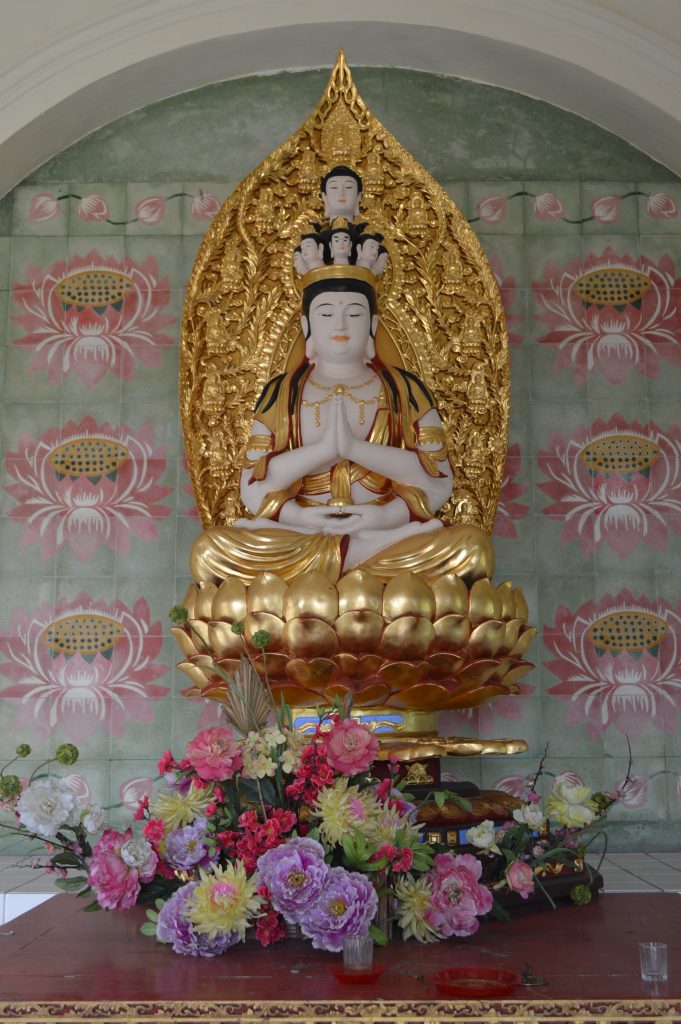
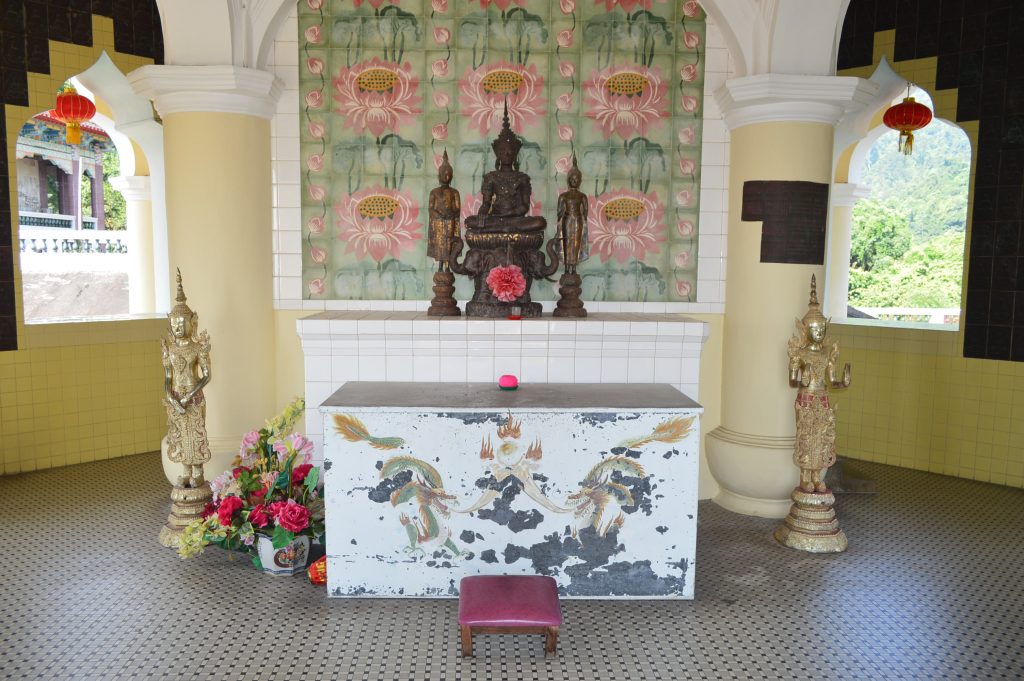
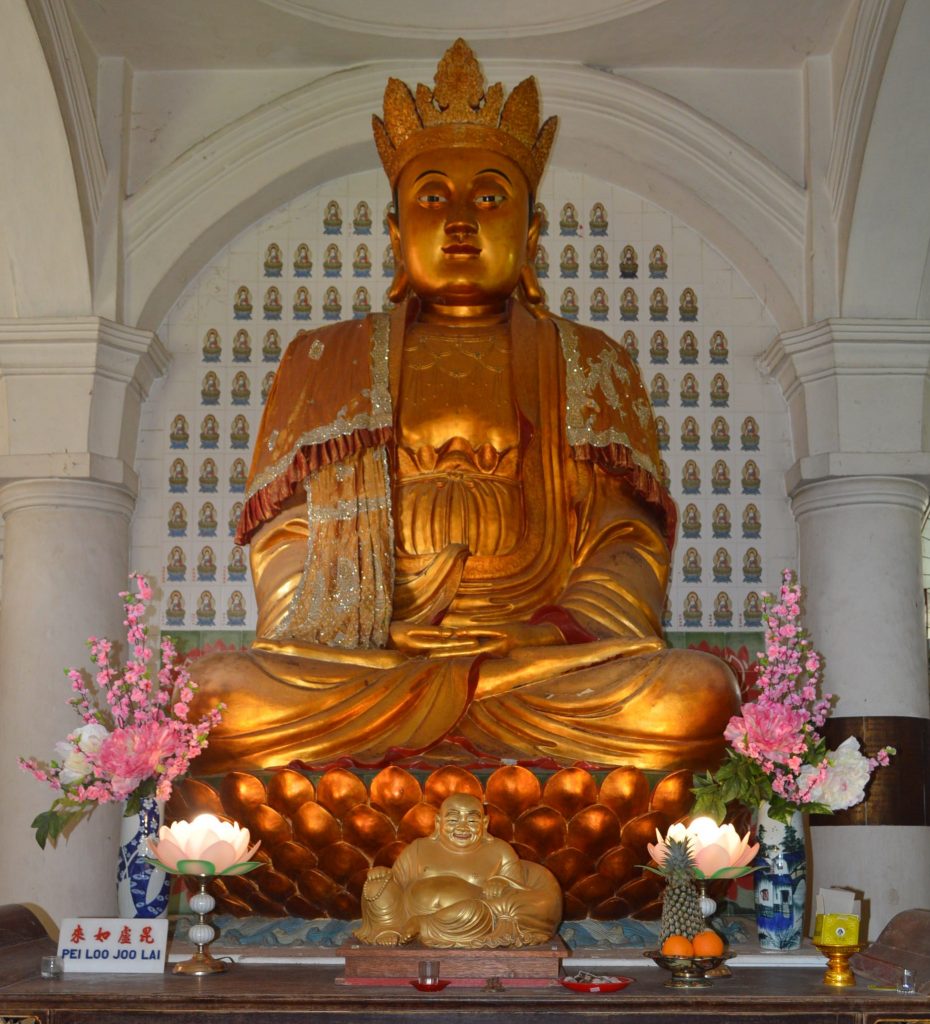
Kek Lok Si Turtle Liberation Pond
Located below the parking area, is the turtle liberation pond. The turtle pond at Kek Lok Si temple symbolizes respect for all forms of life. As a result, the turtles have been liberated. This symbolic act is in accordance with the Buddha’s teaching to never to harm another life form.
Over the years, the turtle pond has gotten pretty crowded and they are not taking in new admissions. However, the turtles seem rather happy and the environment is very friendly in the pond.
